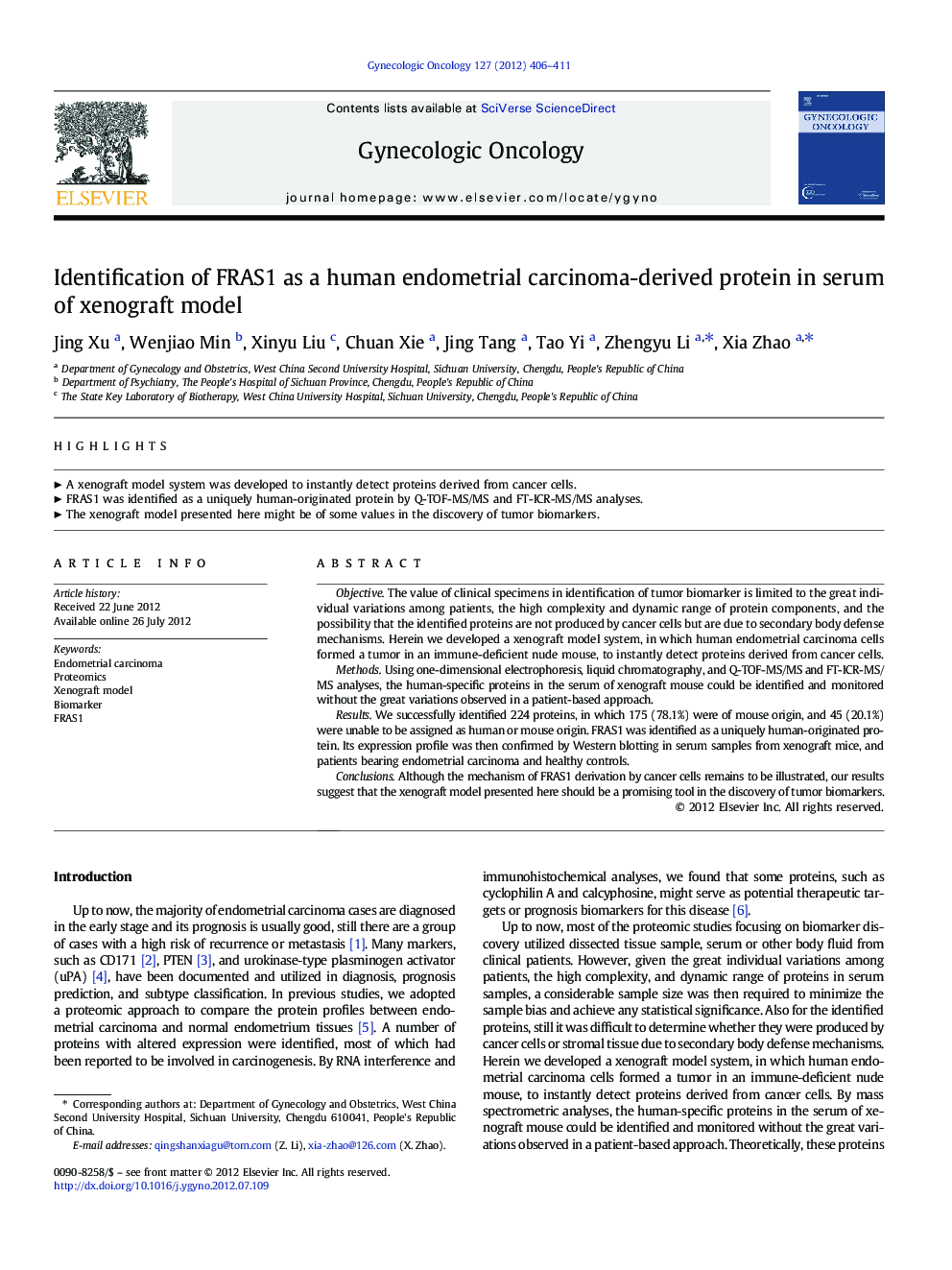| Article ID | Journal | Published Year | Pages | File Type |
|---|---|---|---|---|
| 3944938 | Gynecologic Oncology | 2012 | 6 Pages |
ObjectiveThe value of clinical specimens in identification of tumor biomarker is limited to the great individual variations among patients, the high complexity and dynamic range of protein components, and the possibility that the identified proteins are not produced by cancer cells but are due to secondary body defense mechanisms. Herein we developed a xenograft model system, in which human endometrial carcinoma cells formed a tumor in an immune-deficient nude mouse, to instantly detect proteins derived from cancer cells.MethodsUsing one-dimensional electrophoresis, liquid chromatography, and Q-TOF-MS/MS and FT-ICR-MS/MS analyses, the human-specific proteins in the serum of xenograft mouse could be identified and monitored without the great variations observed in a patient-based approach.ResultsWe successfully identified 224 proteins, in which 175 (78.1%) were of mouse origin, and 45 (20.1%) were unable to be assigned as human or mouse origin. FRAS1 was identified as a uniquely human-originated protein. Its expression profile was then confirmed by Western blotting in serum samples from xenograft mice, and patients bearing endometrial carcinoma and healthy controls.ConclusionsAlthough the mechanism of FRAS1 derivation by cancer cells remains to be illustrated, our results suggest that the xenograft model presented here should be a promising tool in the discovery of tumor biomarkers.
► A xenograft model system was developed to instantly detect proteins derived from cancer cells. ► FRAS1 was identified as a uniquely human-originated protein by Q-TOF-MS/MS and FT-ICR-MS/MS analyses. ► The xenograft model presented here might be of some values in the discovery of tumor biomarkers.
